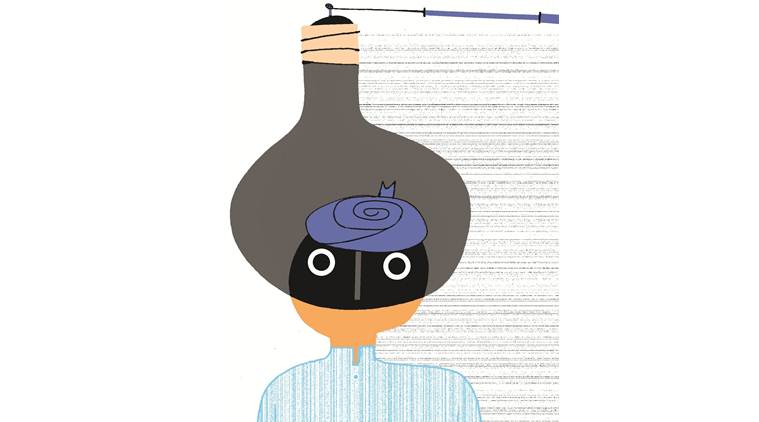Colonialism 2.0
A narrative that seeks to pin onto India the tag of the world’s most dangerous country for women is simply not shored up by data. India’s intellectuals are complicit in its creation.

It is nobody’s case that horrific sexual violence does not happen in India. The infamous Delhi gang rape was a clear reminder of Byron’s famous dictum that “man to man so often unjust, is always so to women”. (Illustration: CR Sasikumar)
According to their website tellingly called http://www.trust.org, the Reuters Foundation is “the philanthropic arm of Thomson Reuters, the world’s biggest news and information provider” and “a source of unbiased thought leadership” and the founder of Reuters Institute at Oxford University. Therefore, when on June 26, they released the results of their “perception poll” about the “world’s most dangerous countries in the world for women in 2018,” the world took notice. Some 550 aid and development professionals, academics, health workers, policymakers, NGO workers, journalists, and social commentators (though it is not clear what competence if any they had in the subject), were asked to “to name the five most dangerous countries from the 193 United Nations member states”. The result was stunning. As the president of Reuters Foundation, Dominique Villa, put it bluntly: “India is now the most dangerous country for women to live in.” She claimed that this is backed by official statistics that show there is a rape in India every 20 minutes and that the government policy in this regard has been largely ineffectual. The website adds: “As India’s rape epidemic gets worse by the year, critics have pointed fingers at Prime Minister Narendra Modi’s government for not doing enough to protect women.”
Exactly what does the data say about rape around the world? The latest comparative data have been compiled by the United Nations Office on Drugs and Crime for 2010 and 2011. If we leave aside tiny St Vincent and the Grenadines, the country with the highest rate of rape is Sweden at 180.9 per 100,000 of the population. Canada is at 77.4, Germany is at 57.3, France at 37.8. By contrast, India has amongst the lowest rates among the hundred or so countries listed at 5.9. Surprisingly, the rate for the US is not listed here, but this gap may be filled by looking at the US FBI statistics on crime for the year 2015, which are the latest ones available. This indicates a number which is 38.6 per 100,000 of the population. Thus, the numbers for France and the US are six times, for Germany 10 times, and for Sweden are 30 times higher than those for India! In terms of these numbers, India is number 73 in the list of 95 countries for which there is data in terms of sexual violence. India is comparable to the positions of Japan, Hungary and Greece — all of which are considered to be safe countries.
What about the actual numbers? Let us look at the experience of the two largest democracies, namely the US and India in this regard. According to “Crime in India” reports from 2013 to 2016 (the latest year for which data is available), the number of recorded rapes in 2013 was 33,707 and 36,735 in 2014. It fell to 34,651 in 2015 and in 2016, it was 38,947 with no particular trend. According to the FBI for the US, on a population that is roughly one fourth, the numbers were three times as large at 113,695, 118,027 and 124,047 respectively in 2013, 2014, and 2015. In other words, a rape in the US is committed every 4 minutes.
The immediate objection may be raised that the numbers for the US and Sweden are higher because they have better reporting. While it is difficult to believe that there may be a 30 times difference in reporting rates between two countries such as Sweden and India and eight time between the US and India, all of which have very active civil society movements, a free press, and vigorous opposition parties, this objection must be addressed head on. The way to address this objection is to actually look at survey data.
For the US, National Intimate Partner and Sexual Violence Survey for 2015 conducted by Centers for Disease Control and Prevention — the premier body for public health in the US — estimates that over her lifetime, a woman in the US has a 43.6 per cent chance of experiencing some form of sexual violence with 21.3 per cent (1 in 5) experiencing attempted or completed rape.
For India, the latest numbers are from 2015-16 National Family Health Survey. Over the course of her lifetime, a woman in India has a 4.7 per cent chance of experiencing sexual violence in urban areas and 6.4 per cent in rural areas. That is to say, the lifetime rates in India are a fraction of those in the US. For 2005-06, the same survey found urban rates of 5.9 per cent and rural rates of 9.7 per cent. In other words, there has been a significant drop in sexual violence in India over the last 10 or so years.
Therefore, the narrative that seeks to pin onto India, the tag of the world’s most dangerous country in the world for women, and one where violence against women is increasing by the day, is simply not borne out by the data. In fact, the annual as well as the lifetime rates of sexual violence in India are amongst the lowest in the world.
It is nobody’s case that horrific sexual violence does not happen in India. The infamous Delhi gang rape was a clear reminder of Byron’s famous dictum that “man to man so often unjust, is always so to women”. Much remains to be done to protect women in India. It is also clear that many areas in India are a challenge for women. But then there are large parts of India where women feel very safe and one must look at the aggregate picture to form a judgement.
Therefore, contrary to all evidence, the systematic attempt by international entities such as the Reuters Foundation, to vilify and willfully defame India and to single it out for condemnation, when the overwhelming mass of data points in exactly the opposite direction, is nothing short of a new form of colonialism. Classic colonialism was the physical occupation of countries. This new colonialism which may be conveniently called Colonialism 2.0, is an attempt to occupy mindspace with the foisting of a prefabricated narrative entirely contrary to the facts. What is equally disturbing is that over the years, the Indian intellectual class has not countered this narrative even though the data to do so are publicly and easily available. In effect, we have been complicit in the creation of this pernicious narrative. If India has to find its rightful place in the world, it must first clear the cobwebs off its collective mind.
The writer is president and director, MICA, Ahmedabad
For all the latest Opinion News, download Indian Express App






































No hay comentarios:
Publicar un comentario